Blackout brings Chandigarh to its knees, army called in
Water supply hit, chaos on roads, hospital work affected, online classes suspended as strike against privatisation of Chandigarh electricity department leaves UT high and dry; Admn imposes Essential Services Maintenance Act to force employees to return to work; some normalcy expected by Wednesday evening
Lakhs of Chandigarh residents were left without power and water since Monday midnight as electricity department employees went on a three-day strike against privatisation, while the clueless UT administration remained a mute spectator.
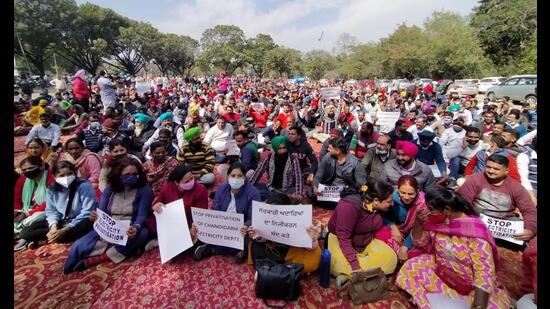
Residents of the country’s first planned city were left high and dry due to the power disruption with water supply hit, chaos on roads with traffic lights on the blink, functioning of hospitals and dispensaries paralysed and online classes affected.
Besides domestic and institutional consumers, work in commercial and industrial areas of the city also came to a standstill across various sectors.
Worse, people working from home were also left without internet as mobile towers in some localities went out of order due to power failure.
As the outages prevailed, city’s power demand took a sharp plunge from the daily average of 260MW to 90MW at 6pm on Tuesday.
After leaving the city residents to fend for themselves for nearly 18 hours, the administration finally woke up from its slumber in the evening and belatedly decided to impose the Essential Services Maintenance Act (ESMA).
The ESMA will allow the administration to force the employees to return to work. Resistance will invite FIRs and even arrest.
Army’s Military Engineer Services (MES) was summoned late at night when UT failed to restore order on its own. “Leaders of the union are being arrested for violation of the ESMA,” said a UT official around midnight.
UT’s earlier request to Punjab and Haryana to send back-up electricity staff to the city evoked no response. On Tuesday, the administration once again approached the chief secretaries of both states for support.
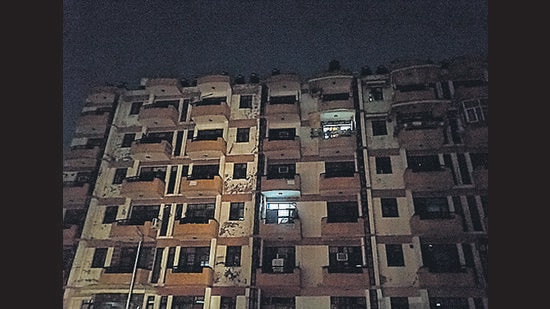
Talks with powermen fail
UT adviser Dharam Pal said, “We believed that negotiations with the powermen will help resolve the situation. But when that didn’t happen we decided to impose the ESMA. Joint teams of electricity department and MES are in the field. It will take some time to restore normalcy.”
As per the ESMA, the government can declare a strike illegal if it prejudicially affects essential services, involving maintenance of any public utility service, public safety or the maintenance of supplies and services, necessary for the life of the community or would result in infliction of grave hardship on the community.
The Act provides six-month to one-year imprisonment if employees take part in illegal strikes and instigate others. The administration also has powers to arrest perpetrators without a warrant.
Bone of contention
Up in arms against privatisation of Chandigarh’s electricity department, the UT Powermen Union gave a call for a three-day strike from Tuesday with a threat to extend the strike for an indefinite period in case the transition was not stopped.
The agitating employees fear the department’s privatisation will lead to a change in service conditions along with higher power tariffs for city residents. National and state-level employee unions, political parties and resident associations have come out in support of the electricity department employees.
The strike call was given two months ago, but the administration failed to resolve the issue. It couldn’t make arrangements to reduce the impact of the strike either.
The UT is likely to hand over the power utility to private hands by March-end.
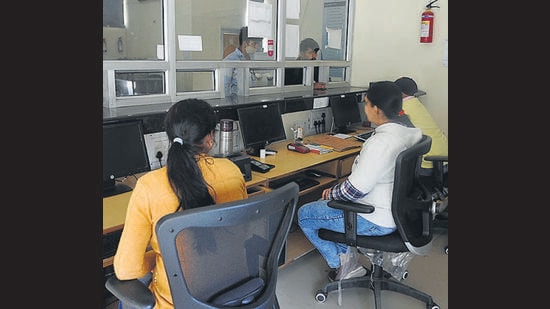
Administration’s assurances fall flat
The assurances of the administration that necessary arrangements had been made to maintain uninterrupted electricity supply fell flat as people struggled to cope with the disruption. Calls to complaint number didn’t elicit any response in most cases.
MS Rawat of Sector 40-C said: “Nobody is taking calls at the control room numbers listed by the UT administration.”
Residents of Sector 45-C said power cuts started around 11pm, even before the strike officially began at midnight.
“It is a total failure on the part of the administration. A contingency plan should have been in place before the strike began. Why didn’t the administration enforce the ESMA before the strike began? Why were residents left at the mercy of the agitating union? Every UT official we contacted only expressed helplessness, saying they didn’t have any staff to attend to our complaints,” said Col Kulwinder Singh (retd), president, Resident Welfare Association, Sector 10.
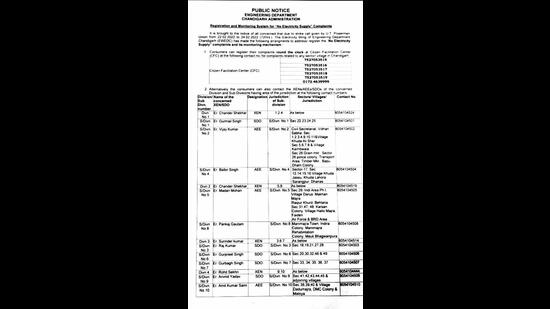
Sabotage versus lapses
While the administration’s officials blamed sabotage by the union for the outages, the union leaders maintained that the administration failed to manage system tripping, transformer failures and other related problems.
“At several places, wires were found broken. There were issues with transformers at some places and at some places, key components were missing. Start of strike and outages were at the same time,” said an official, who didn’t want to be named.
Gopal Dutt Joshi, secretary, UT Powermen Union, said, “We had no role in the outages. We were at our homes or at the protest site.”
Jyoti Bhardwaj, a resident of Sector 47-D, said electricians, who lived in the neighbourhood, found some transformer wires snapped and used these to partially restore power. However, the matter was not reported to the police, though the UT administration on Monday had urged residents to report any instances of sabotage.
Water supply hit
Water supply to various sectors was disrupted due to the power outages. Some sectors reported no supply since morning, while at others, the pressure remained low. In Sector 44, residents had to call in water tankers.
MC commissioner Anindita Mitra said, “Yes, issues with water supply were reported. We have released complaint numbers and our teams are in field for help. We have enough generators and water tankers to deal with the situation for two days.”

Markets go dark, consumables perish
As power cuts ruled the day, consumables started perishing across markets.
“Dairy items, such as milk and ice-cream, got spoiled as power didn’t return. Poultry shops also reported meat products were ruined, while chemists said medicines that needed to be stored at cold temperatures were affected. We request the protesters and the authorities to settle their differences, so that the public and traders don’t suffer,” said Charanjiv Singh, president, Chandigarh Beopar Mandal.
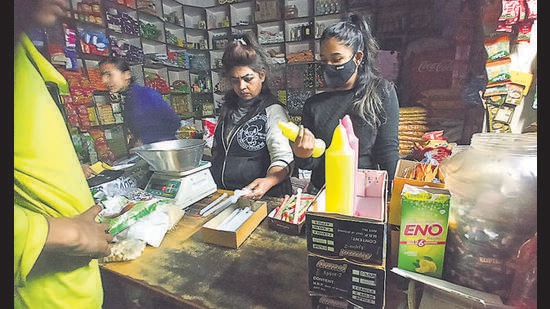
Schools, colleges bear the brunt amid ongoing exams
While St Stephen’s School in Sector 45 postponed its exams for younger classes, other schools and colleges in Chandigarh relied on power backups to ensure exams continued smoothly.
Currently, online semester exams are being held at Panjab University and its affiliated colleges, while some private schools are holding offline exams, besides regular classes.
As power cuts started in the city post midnight, college administrations stayed on toes since morning to ensure the server rooms remained running for smooth conduct of exams. Director, higher education, UT, Jagjit Singh, said, “We are in touch with the colleges and will provide support if needed.”
At government schools, teachers reported issues in charging their mobile phones to continue online classes.
GMCH-32, GMSH-16 suspend all elective surgeries
Amid the erratic power supply, Government Medical College and Hospital (GMCH), Sector 32, and Government Multi Specialty Hospital (GMSH), Sector 16, suspended all elective surgeries.
At GMCH-32, the power outage started at 1am on Tuesday. Though the hospital immediately shifted the supply to generators to ensure undisrupted emergency services, it postponed 25 elective surgeries scheduled in the morning as power cuts in the midst of surgery can put patients at risk.
Meanwhile, patients were left harried at civil hospitals, dispensaries, and health and wellness centres, where sufficient resources were not available.
“At the dispensaries, and health and wellness centres, the OPD services were affected as the tele-consultation and e-sanjeevani services could not be run due to internet and computer breakdowns. Also, as the refrigerators were not working, storage of the Covid-19 vaccines became a big issue. Eventually, health teams shifted the vaccines to hospitals and centres with power supply,” said Dr Suman Singh, director, health services, Chandigarh, adding that no vaccine dose was ruined.
Meanwhile, medical services remained unaffected at PGIMER, as no power cut was reported from the institute till the filing of this report. But amid power outages in sectors, Covid patients in home isolation and those suffering from other diseases, but getting treatment at home, also reached out on social media to complain of major inconvenience.

Traffic lights remain out of order
While traffic lights stopped working, the Chandigarh Traffic Police failed to deploy enough manpower to manage the traffic at intersections. Apart from dangerous driving, traffic jams were reported on various intersections, including Press light point, Tribune Chowk, Zirakpur road, Sector 34/35 light point, Sector 46/47/48/49 light point and 45/46/49/50 light point.
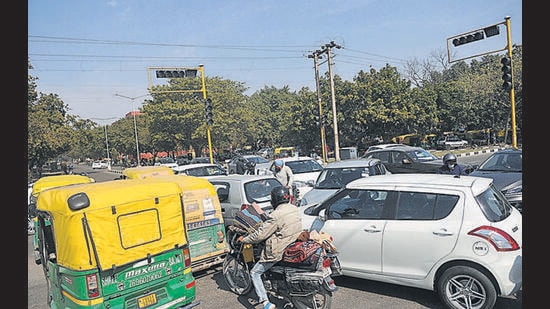
Industry loses ₹70 crore in a day
Industrial Area Phases 1 and 2 are facing a power shutdown since Monday night. “There is no alternative arrangement or back-up for power as earlier claimed by the electricity department. The industry is seeing a production loss of ₹60 crore to ₹70 crore a day in Industrial Area alone,” Naveen Manglani, the president of the Chamber of Chandigarh Industries.
To compensate the industry for production losses due to the strike, the electricity department must waive a month’s dues, industrialists said.
With inputs by Rajanbir Singh, Dar Ovais and Mandeep Kaur Narula





